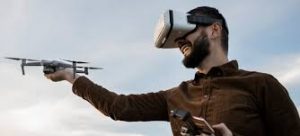First-Person View Drones:

Ukraine used First-person view drones to attack Russia and destroyed more than 40 planes.
- First-Person View Drones are unmanned aerial vehicles enhanced with artificial intelligence to perform advanced tasks with greater precision and autonomy.
- By processing real-time video data through AI algorithms, FPV drones are able to avoid obstacles, and carry out mission-specific operations such as surveillance and search and rescue.
- First-person view (FPV) means that a person piloting a drone can see what the drone sees, through a camera attached to its body.
- The live video can be seen through specialised goggles, or on smartphones and other kinds of screens, and the drone can be manoeuvred remotely.
- Before FPV drones are deployed, a reconnaissance drone with a larger range first goes to survey the area and zero in on a specific region that needs to be targeted.
- FPV drones have a much smaller range, of a few kilometres.
- It Operates without relying on satellite-based GPS, enhancing resilience against jamming or signal loss.
- Utilises advanced visual-inertial navigation, interpreting camera data to determine position and movement.
- LiDAR technology complements the SmartPilot system, boosting precision in complex or cluttered environments.
- The key advantages are cost and deep strike capabilities while remaining largely undetected.
- One major challenge is that the drones’ movement through their surroundings cannot be seen by the drone operator.
- This can limit situational awareness and may lead to disorientation. At times, another person, a visual observer, may be needed to guide the person controlling the drone.
- Such drones are also used in filming and other non-defence purposes.




